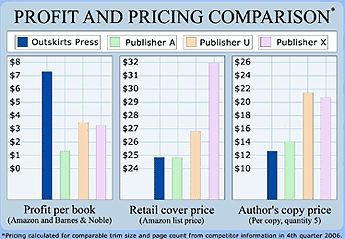New Year's Resolutions for Writers
Did you know that year after year, the number 1 and number 2 most popular new year's resolutions are:
- Lose weight
- Publish a book
You might be on your own with #1, but there is a way to accomplish #2, and more successfully, quickly, and affordably than you can imagine.
On-demand publishing helps legions of writers accomplish the second most common New Year's Resolution: publishing a book! It is important to remember that "Getting Published" the right way depends upon more than just finishing your manuscript and sending it off to a publishing company.
There are a number of important factors to consider.
Publication Timeframe
Between traditional publishers and digital book mills, the timeframe for your book's publication may range between 24 months and 24 hours. Both extremes should be avoided. Traditional publishing houses often take up to 24 months to reject a book. Author stories are common about publishers who initially accepted their book for mainstream publication, only to reject it 18-24 months later because the "Marketing Department" didn't consider it feasible. If you have experienced a similar situation, you are a good candidate for on-demand publishing.
On the other hand, digital dot-com book mills on the Internet claim to publish books instantly. One even features a graphic of a "machine" publishing your book for you. How comforting! Machines can do anything in 24 hours, except love something. After the time you invested in your book, you should seek a publishing process that is a bit more... human.
The proper timeframe for book publication is somewhere in between those two extremes. Six weeks is not unreasonable. Nor is 6 months.
Up-Front Costs
Between traditional publishers and off-set vanity presses, the up-front costs for book publication range between $0 and tens-of-thousands of dollars. Just like the timeframe range, both extremes should be avoided. Publishing in the tens-of-thousands range is primarily paying for an off-set print run for books that will then need to be stored (incurring another fee for inventory management).
On the other hand, free publishing requires something even more valuable than a one-time finite fee, like your publishing rights (or something even worse). One dot-com book mill's CEO describes his company's business model in the following trite terms: "One man's trash is another man's treasure." The "trash" he refers to are the books they publish. Not surprisingly, this is the same company that has a "machine" publishing books for them. Yes, machines often generate trash. Proceed with caution.
The proper cost is somewhere in between.
Recurring Back-End Costs
Most authors are unaware of back-end costs at all (and publishers take advantage of that). Be different. Inform yourself by reading and understanding this next section.
Back-end costs include your author's copy price, your retail price/profit margin differential, and your royalties. Most authors focus solely on the one-time-only front-end cost, even though the back-end costs are recurring month after month for the life of the book.
Here is a side-by-side comparison of 4 leading on-demand publisher's back-end costs for a 5.5" x 8.5" hardback book (224 pages) with a dust jacket:

This is based upon an actual book published by an on-demand publisher, titled Pretty Blue, for which the author selected the trim size, the hardback edition upgrade, and set the retail price ($24.95), the distributor discount (20%), and the royalty (29%).
If you have already published your book with an on-demand publisher, closely examine what your back-end costs are costing you, and make the appropriate changes. Sometimes, changing publishers is more profitable in the long-run, even if it means absorbing another up-front publishing fee. Of course, only you can make that decision, but by knowing the differences between finite up-front costs, and on-going back-end costs, you are better equipped to make those decisions profitably. Don't just accomplish that New Year's Resolution in 2007. Accomplish it well.

<< Home